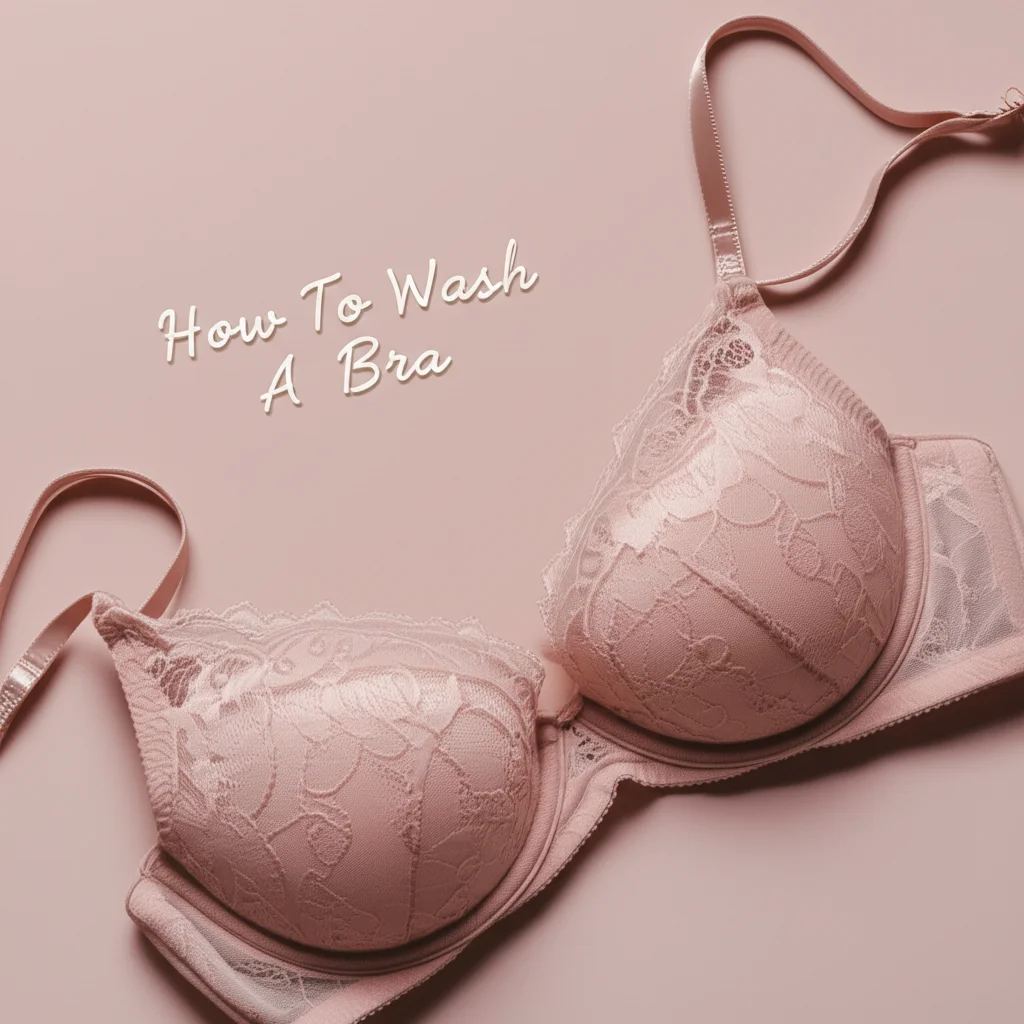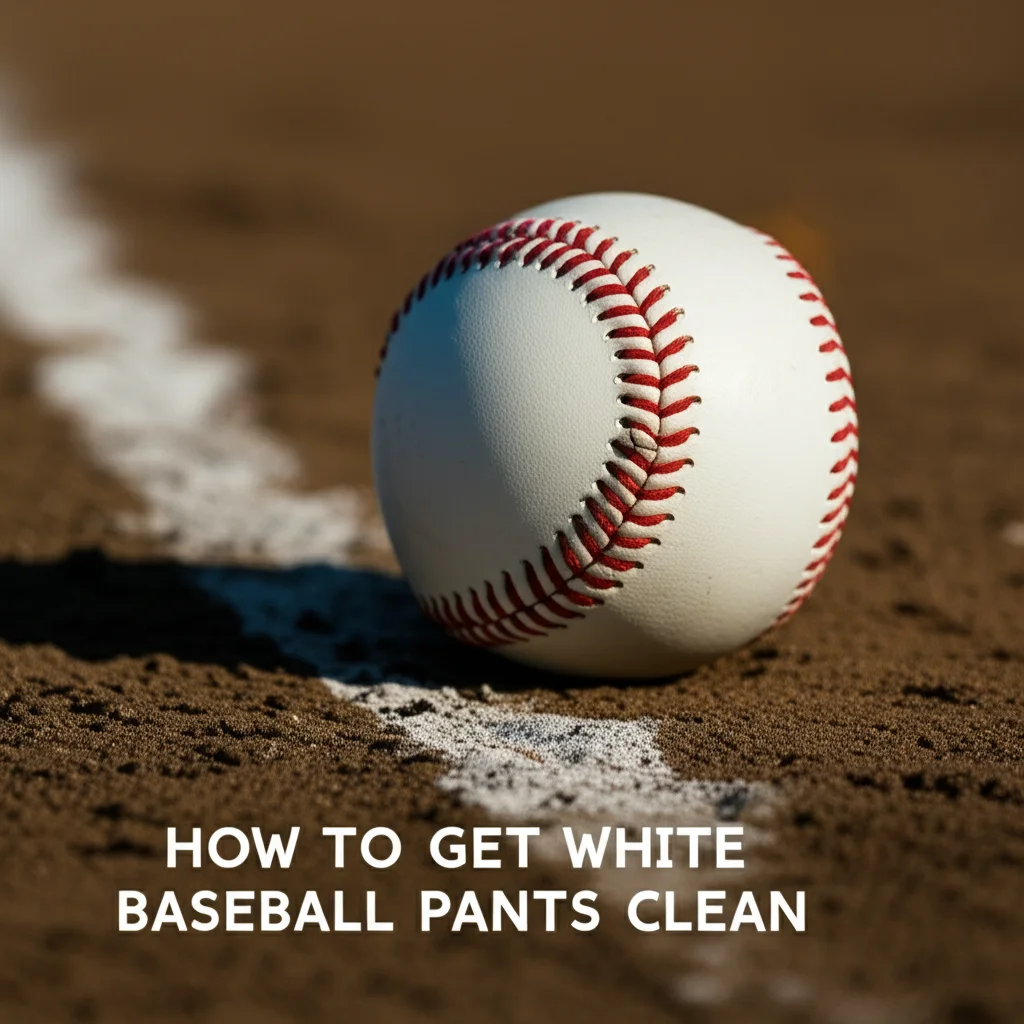· Todd Martin · Laundry & Clothing Care · 16 min read
How To Wash A Bra

The Complete Guide: How To Wash A Bra for Lasting Support
Do you remember the first time you bought that perfect bra? It fit just right, felt comfortable, and gave you the support you needed. Many of us forget that proper care helps bras keep their shape and last longer. Knowing how to wash a bra correctly is essential. It prevents stretching, maintains elasticity, and ensures hygiene. This guide will walk you through the best methods. We will cover hand washing, machine washing, drying tips, and specific care for different bra types. You will learn easy ways to keep your favorite bras in great condition.
Takeaway
- Hand wash most bras with mild detergent and cool water for best results.
- Machine wash bras only on a delicate cycle, in a mesh bag, with cold water.
- Always air dry bras to prevent damage to elastic and cups.
- Read care labels for specific washing instructions unique to each bra.
- Address specific bra types like sticky bras or sports bras with tailored methods.
How to Wash a Bra: Quick Answer
Wash bras gently to protect their delicate structure. Hand washing with a mild detergent in cool water is the safest method. If you use a machine, place bras in a mesh bag and select a cold water, delicate cycle. Always air dry bras to preserve their shape and elasticity.
Why Proper Bra Washing Matters for Longevity
Washing your bras correctly offers many benefits. It helps your bras maintain their shape and support. It also makes them last much longer. Incorrect washing can quickly ruin a bra.
Heat damages elastic fibers. This makes the bra lose its stretch and support. Agitation from a washing machine can twist underwires or distort padded cups. Harsh detergents can break down delicate fabrics. Regular, gentle cleaning also removes body oils, sweat, and dirt. This prevents skin irritation and keeps the bra fresh. By learning how to wash a bra properly, you invest in your comfort and your wardrobe. Good care saves you money in the long run.
- Shape Retention: Correct washing helps cups and bands keep their original form. This ensures the bra continues to provide proper support.
- Elasticity Preservation: Gentle care extends the life of elastic straps and bands. This means your bra stays snug and supportive longer.
- Fabric Integrity: Protecting delicate fabrics prevents pilling, tearing, or discoloration. Your bras will look newer for a longer time.
- Hygiene and Freshness: Regular washing removes bacteria, sweat, and oils. This keeps your bra clean and prevents odors.
- Underwire Protection: Hand washing or using a mesh bag in a machine protects underwires from bending or popping out. This maintains bra structure.
Proper bra washing is a simple act that yields significant results. It protects your investment. It also ensures your comfort every day.
Decoding Your Bra’s Care Label
Before you begin washing any bra, look at its care label. This small tag provides vital information. It tells you the best way to clean your specific bra. Ignoring these symbols can lead to damage.
Care labels use universal symbols. A tub of water indicates washing instructions. A number inside the tub shows the maximum water temperature. A hand in the tub means hand wash only. A crossed-out tub means do not wash. A triangle symbol deals with bleaching. A square with a circle indicates drying. A cross through it means do not tumble dry. A clothesline symbol tells you to line dry. An iron symbol shows ironing instructions, but bras rarely need ironing. Always follow these guidelines to keep your bra in top shape.
- Washing Symbol (Tub):
- A tub with water: Machine wash.
- A tub with a hand: Hand wash only.
- A tub with a cross: Do not wash.
- Numbers in the tub (e.g., 30, 40): Maximum water temperature in Celsius.
- One or two lines under the tub: Gentle or delicate cycle needed.
- Bleaching Symbol (Triangle):
- Empty triangle: Any bleach allowed.
- Triangle with two diagonal lines: Non-chlorine bleach only.
- Crossed-out triangle: Do not bleach.
- Drying Symbol (Square):
- Square with a circle inside: Tumble dry. Dots inside the circle indicate temperature (one dot for low, two for medium).
- Square with three vertical lines: Drip dry.
- Square with a horizontal line: Flat dry.
- Square with a curved line: Line dry.
- Crossed-out square with circle: Do not tumble dry.
- Ironing Symbol (Iron):
- An iron with dots: Indicates iron temperature (one dot for low, three for high).
- Crossed-out iron: Do not iron.
Understanding these symbols helps you avoid common washing mistakes. It ensures your bra receives the care it needs. This protects its delicate materials and construction.
Hand Washing Bras: The Gentle Approach
Hand washing is the gold standard for bra care. It is the gentlest method. This process prevents stretching, snagging, and damage to delicate lace or underwires. Many bras, especially those with intricate designs, padding, or silk components, truly benefit from this method. It takes a little more time, but the effort saves your bras from harm. I find hand washing relaxing, a small moment to care for my clothes. It ensures my favorite pieces stay perfect for longer. If you have ever wondered how to wash a silk scarf, you will find the process for bras very similar in its gentleness and attention to detail.
Here is a step-by-step guide to hand washing your bras:
- Fill a Basin: Find a clean basin, sink, or even a small bucket. Fill it with cool or lukewarm water. Hot water can break down elastic and damage fabric.
- Add Mild Detergent: Pour a small amount of mild liquid laundry detergent into the water. A detergent made for delicates or lingerie is ideal. Avoid harsh detergents or those with strong chemicals. Swish the water to create suds.
- Submerge Bras: Place one or two bras into the soapy water. Do not overcrowd the basin. Let them soak for 10-15 minutes. This helps loosen dirt and oils.
- Gently Wash: After soaking, gently swirl each bra in the water. Lightly rub any soiled areas with your fingers. Focus on the band and cups. Do not scrub, twist, or wring the bra. Be very gentle to avoid stretching or distorting the material. You can also learn how to wash clothes without a washer for a broader understanding of manual cleaning methods.
- Rinse Thoroughly: Drain the soapy water. Refill the basin with clean, cool water. Rinse each bra thoroughly until all detergent is gone. Press clean water through the fabric gently. Repeat rinsing if needed.
- Remove Excess Water: Do not wring the bra. Instead, gently press water out of the cups and band. You can roll the bra in a clean, dry towel to absorb more moisture. This helps speed up drying without damaging the bra.
Hand washing preserves the shape and extend the life of your bras. It is a worthwhile practice for any delicate garment.
Machine Washing Bras: When and How to Do It Safely
While hand washing is best, sometimes machine washing is necessary. You can machine wash some bras, but you must take precautions. This method is generally suitable for more durable bras, such as sports bras or everyday cotton styles. It is still crucial to protect them from the machine’s agitation. A wrong wash can bend underwires, snag lace, or misshape cups. Always use a delicate cycle and cold water. This helps preserve fabric integrity and elasticity. Think of it like washing other delicate items; you must be careful. For example, similar gentle methods apply when considering how to wash a swimsuit to prevent stretching and damage.
Follow these steps for safe machine washing:
- Fasten Hooks: Before placing bras in the machine, fasten all hooks on the back. This prevents them from snagging on other items. It also stops them from stretching the bra’s own band.
- Use a Lingerie Bag: Place each bra into a mesh lingerie bag. These bags are essential. They protect bras from tangling with other clothes. They also shield delicate straps and underwires from stretching or bending during the wash cycle. You can place multiple bras in one large bag if they fit without overcrowding.
- Separate Colors and Whites: Wash light-colored bras with other whites or light items. Wash dark-colored bras with similar colors. This prevents color bleeding.
- Select the Right Settings: Choose the “delicate” or “gentle” cycle on your washing machine. Always use cold water. Cold water is less harsh on elastic and fabric dyes.
- Use Mild Detergent: Add a small amount of mild liquid detergent. Avoid harsh chemicals, bleach, or fabric softener. Fabric softener can leave residue on elastic fibers.
- Load the Machine: Add the lingerie bag with your bras to a small load of similar delicate items. Do not wash bras with heavy items like jeans or towels. The heavy items can crush or damage the bras during the wash.
- Remove Promptly: As soon as the cycle finishes, remove your bras from the machine. This prevents them from sitting in the damp drum, which can cause mildew.
Machine washing is an option for certain bras. Always prioritize gentle methods and protective measures. This will extend the life and beauty of your lingerie.
Drying Your Bras: Air Drying is Key
Drying bras correctly is as important as washing them. Tumble dryers are the worst enemy of bras. The high heat and vigorous tumbling cause significant damage. Heat destroys elastic fibers, leading to stretching and loss of support. It can also warp padded cups and cause underwires to poke through. Always air dry your bras. Air drying maintains the bra’s original shape, support, and longevity. It is a simple step that makes a huge difference.
Here are the best ways to air dry your bras:
- Reshape Cups: After washing, gently reshape the bra cups with your hands. Smooth out any wrinkles or dents. This helps them dry in their natural form.
- Hang Properly:
- Hang by the center gore: This is the small fabric piece between the cups. Use a hanger or a drying rack. Hang the bra by its center gore. This allows air to circulate around the cups and band. It also prevents stretching the straps.
- Lay flat: For padded or molded cup bras, laying them flat on a clean, dry towel is also a good option. This provides support to the cups as they dry. It prevents any possible distortion from hanging.
- Avoid Direct Sunlight or Heat: Do not dry bras in direct sunlight or near a heat source. Excessive heat can still damage elastic, even if it is not from a dryer. Find a well-ventilated area indoors or a shaded outdoor spot.
- Allow Ample Time: Bras can take several hours to fully dry, especially padded ones. Make sure they are completely dry before storing them. Storing damp bras can lead to mildew and odors.
- Do Not Clip by Straps: Avoid hanging bras by their straps with clothespins. This can create dents or stretch marks on the delicate strap material.
Air drying ensures your bras retain their shape and provide optimal support. It is a vital step in proper bra care. This method helps your bras last as long as possible.
Special Care for Different Bra Types
Not all bras are created equal, and their washing needs can vary. Different materials and designs require specific attention. Understanding these nuances helps preserve your entire bra collection. Treating each type with its unique care ensures maximum longevity and comfort.
- Underwire Bras: Underwire bras provide structure and support. Machine washing can bend or break underwires. It can also cause them to poke out of the fabric. Hand washing is the safest option for underwire bras. If you must machine wash, always use a lingerie bag. Make sure the hooks are fastened. Use the delicate cycle with cold water.
- Padded and Molded Bras: These bras have structured cups that can easily lose their shape. Avoid twisting or wringing them. Hand washing is ideal. If machine washing, use a lingerie bag and lay them flat to dry. This helps maintain the cup form. Never put them in the dryer.
- Lace and Silk Bras: These materials are very delicate. They are prone to snagging and tearing. Always hand wash lace and silk bras. Use a very mild detergent made for delicates. Rinse thoroughly and press out water gently. Air dry them flat or hang them carefully.
- Sports Bras: Sports bras are often made from synthetic, moisture-wicking fabrics. They can handle a bit more wear and tear. You can machine wash most sports bras. Use cold water and a gentle cycle. Still, place them in a lingerie bag to prevent stretching and snags. Avoid fabric softener, as it can block the moisture-wicking properties of the fabric. Air dry them for best results.
- Sticky Bras/Adhesive Bras: These bras are unique. They do not have straps or bands. They stick directly to your skin. Learning how to wash a sticky bra is very different from regular bras. You typically wash the adhesive part with mild soap and water, then air dry with the adhesive side up. Never machine wash or tumble dry them.
- Nursing Bras: These bras have clips for easy feeding access. Treat them like regular bras. Hand washing is preferred for delicate clips and stretchy fabric. If machine washing, use a lingerie bag and delicate cycle.
- Push-Up Bras: These bras contain extra padding or gel inserts. Handle them with care to keep the padding intact. Hand wash them gently. If machine washing, use a lingerie bag and cold water. Reshape the cups carefully before air drying.
By understanding the specific needs of each bra type, you can extend their life and keep them performing their best. Proper care ensures your bras continue to provide comfort and support.
Common Bra Washing Mistakes to Avoid
Washing bras can seem straightforward, but many people make common errors. These mistakes can reduce your bra’s lifespan and effectiveness. Avoiding these pitfalls will keep your bras supportive and beautiful for longer. I have made some of these mistakes myself, and I learned the hard way how much damage they can cause.
Here are the key mistakes to steer clear of:
- Using Hot Water: Hot water is damaging to bra materials. It breaks down elastic fibers and can shrink or warp cups. Always use cold or lukewarm water when washing bras, regardless of the method.
- Using Harsh Detergents: Strong detergents with harsh chemicals or bleach can damage delicate fabrics. They can also cause discoloration. Opt for a mild, gentle detergent, ideally one designed for delicates or lingerie.
- Washing with Heavy Items: Putting bras in a load with heavy items like jeans, towels, or sweaters is a recipe for disaster. Heavy items can crush, twist, and snag delicate bras. This leads to bent underwires and stretched bands. Always wash bras with other light or delicate items.
- Skipping the Lingerie Bag: Machine washing bras without a lingerie bag is a major mistake. The bag protects bras from tangling, snagging on hooks, and distortion during agitation. It is a small investment that offers big protection.
- Putting Bras in the Dryer: This is arguably the biggest mistake. The high heat of a tumble dryer is extremely damaging. It destroys elastic, melts padding, and can cause underwires to pop out. Always air dry your bras.
- Wringing or Twisting: After washing, avoid wringing or twisting your bras to remove excess water. This can stretch out bands and straps, and distort cups. Gently press out water or roll the bra in a clean towel.
- Overloading the Washing Machine: An overloaded machine does not clean clothes effectively. It also puts more stress on delicate items. Wash bras in small loads. This gives them enough space to move freely and clean properly.
- Not Fastening Hooks: Leaving bra hooks unfastened in the washing machine is a common oversight. The hooks can snag on other items in the load or even on the bra itself. This causes damage. Always fasten the hooks before washing.
By avoiding these common errors, you can significantly extend the life of your bras. Proper care means your bras will continue to provide the comfort and support you need for a long time.
FAQ Section
How often should I wash my bra? You should wash your bra every 2-3 wears. This depends on your activity level and body chemistry. If you sweat a lot, wash it after every wear. Regular washing removes oils and sweat. It helps maintain the bra’s elasticity and hygiene. Over-washing can wear out the fabric. Under-washing can lead to odors and skin irritation.
Can I put my bra in the dryer? No, you should never put your bra in the dryer. The high heat in a tumble dryer is very harmful to bras. It damages the elastic fibers, causing them to stretch and lose their shape. Heat can also warp padded cups and cause underwires to bend or poke through the fabric. Always air dry your bras.
What kind of detergent should I use for bras? Use a mild, gentle liquid laundry detergent for bras. Look for detergents specifically designed for delicates or lingerie. Avoid harsh chemicals, strong stain removers, or bleach. These can damage delicate fabrics and colors. A small amount of mild soap is usually sufficient for effective cleaning.
How do I wash white bras to keep them white? Wash white bras separately from colored items to prevent dye transfer. Use a mild detergent designed for whites. You can add a small amount of non-chlorine bleach if needed, but check the care label first. Hand washing is safest. If machine washing, use a lingerie bag and a cold, delicate cycle. Always air dry.
What is a lingerie bag and why do I need one? A lingerie bag is a mesh bag, often with a zipper closure. You place delicate items like bras inside it before machine washing. It protects bras from tangling with other clothes. It also prevents snags, stretching, and damage from the machine’s agitator. It is essential for machine washing bras safely.
Conclusion
Caring for your bras might seem like a small detail, but it makes a big difference. Knowing how to wash a bra correctly helps extend its life. It also keeps your bras comfortable and supportive. We have explored the benefits of proper washing, from maintaining shape to ensuring hygiene. We covered the importance of reading care labels. We walked through detailed steps for both hand washing and safe machine washing. We also discussed the crucial role of air drying. Remember to tailor your approach for different bra types. This thoughtful care protects your investment.
By avoiding common mistakes like using hot water or tumble dryers, you ensure your lingerie lasts. Giving your bras the care they deserve means they will continue to provide the comfort and support you rely on. So, take these tips. Start a new routine for your bra care today. Your bras—and your comfort—will thank you for it! Keep your essentials in top shape.





